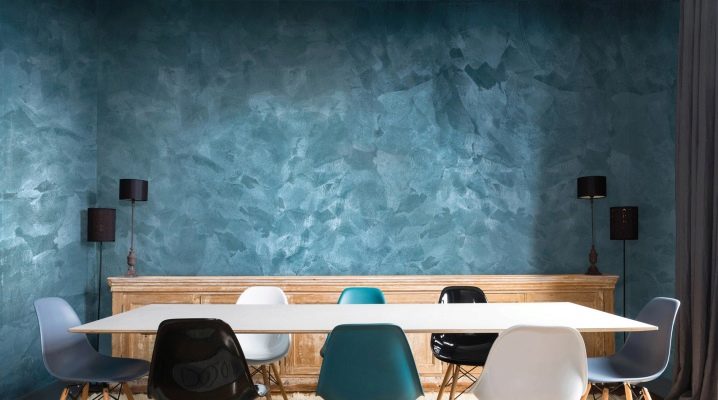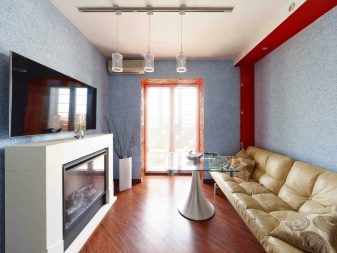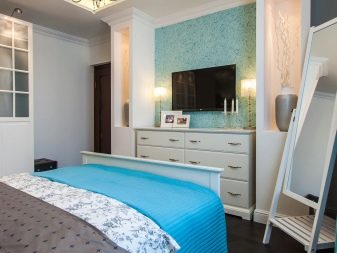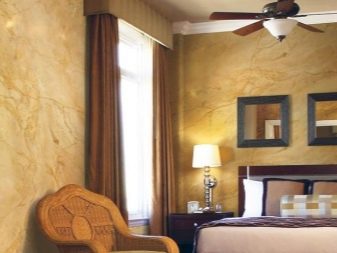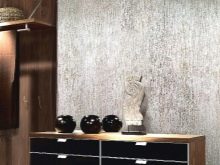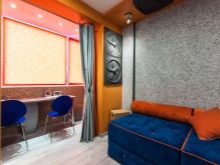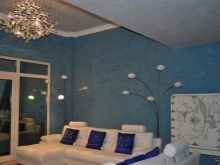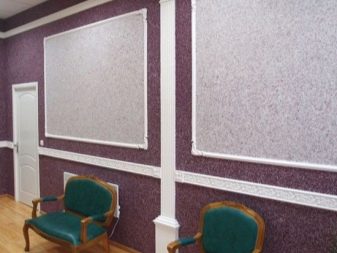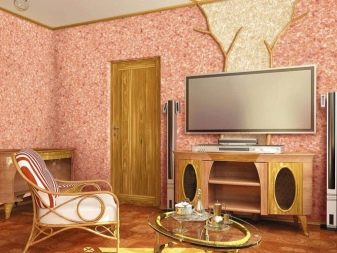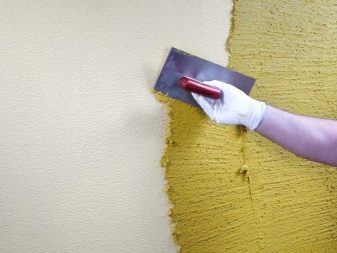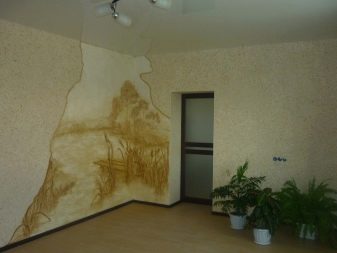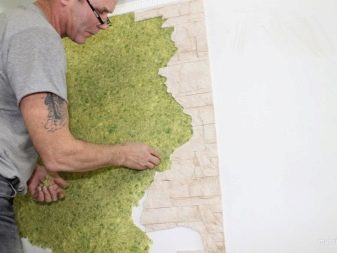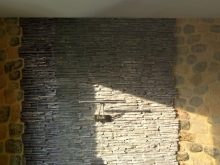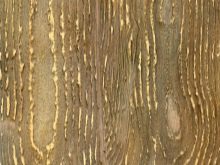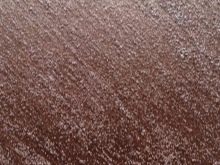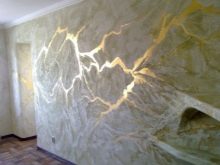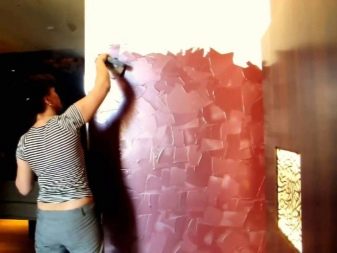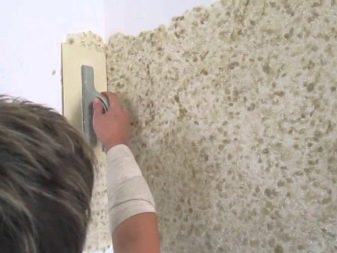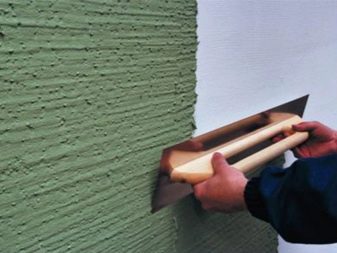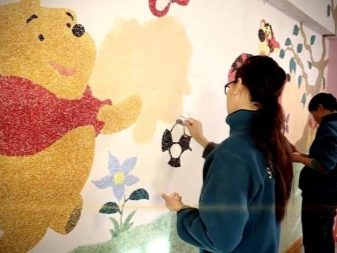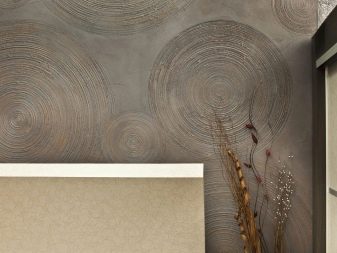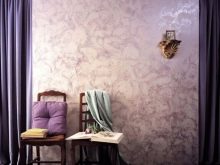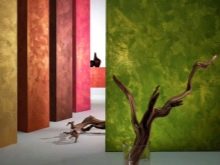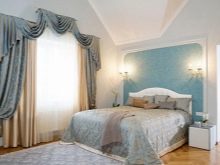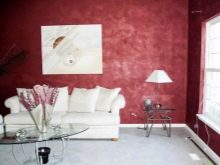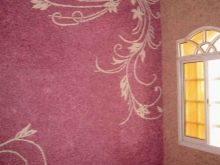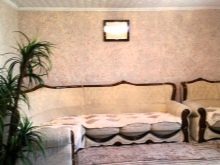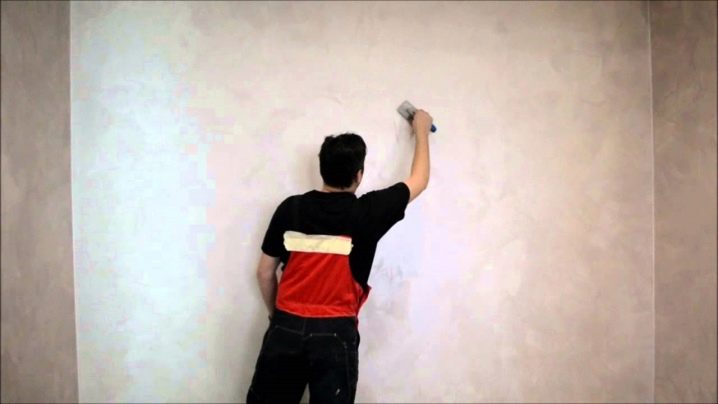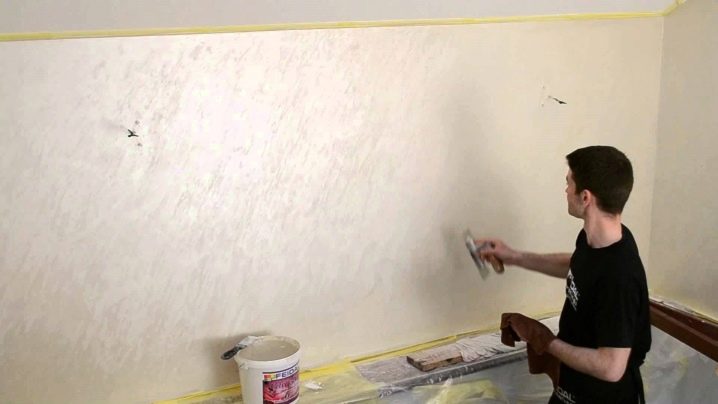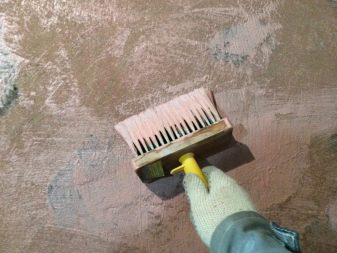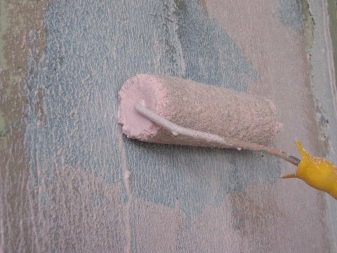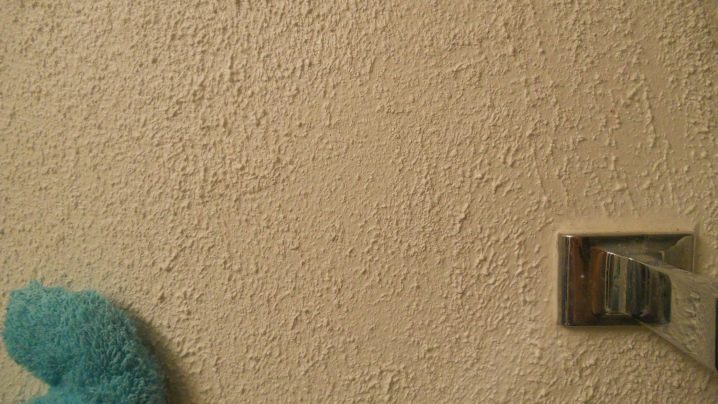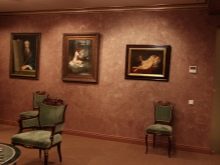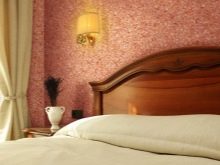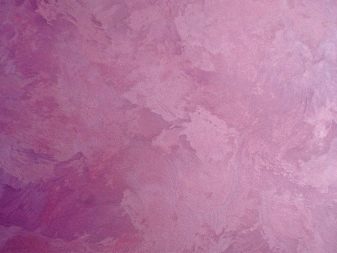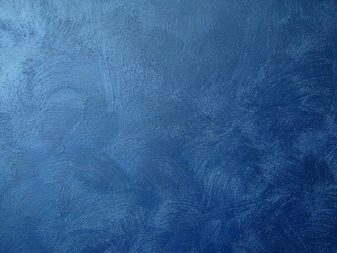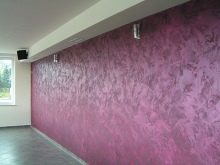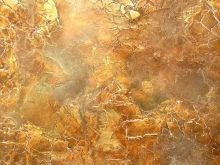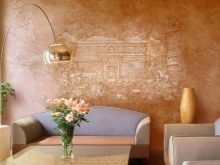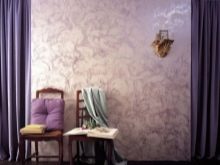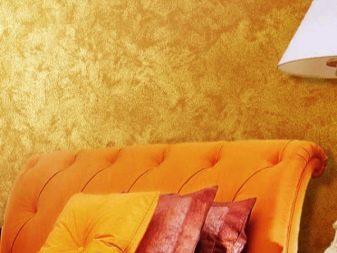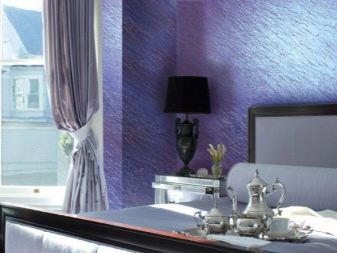Silk plaster in interior design
The use of decorative plaster surfaces has become a familiar way of decorating walls and ceilings. What is it, what are the features of this material, how to decorate space with its help, we will consider in the article.
Special features
Decorative plaster or coating with a silk effect is a finishing material of thick consistency, which is used to decorate the walls and ceiling of the room. This coating is often equated to liquid silk-based wallpaper. In fact, these are two different finishing materials, differing primarily in composition. In decorative silk plaster there is no silk, it is visually more pleasant and uniform, it has no roughness.
The peculiarity of this material compared to liquid wallpaper is the uniqueness of the texture. Externally, silk plaster looks more representative, therefore it costs more than liquid wallpaper.It is more durable and dense in consistency, suitable for interior surfaces. Usually put structure on the basis at a temperature from +5 to +35 degrees. Sometimes it is called decorative pearl paint for interior work.
It differs in that it is more difficult to apply it than liquid wallpaper. This also makes it difficult to correct damaged areas that need to be replaced. To make it imperceptibly almost impossible. The advantage of this finish is the ability to add to the finishing mass of various sparkles. The texture is different and externally: it looks whole, while liquid wallpaper on closer examination consist of individual granules.
Another feature of the application is the layer thickness. If the liquid wallpaper, which is applied in one layer, it is 4-7 mm, in this case, the total thickness is up to 3 mm, while for the desired effect the application is carried out in two layers. The difference between each type of silk plaster lies in the methods of forming the second layer. For such a material, even the tool that forms the pattern matters. Externally, it may resemble cracks, overflow, compressed textile.Especially beautifully look on such a basis drawings, which are much more aesthetic painted with liquid wallpaper.
This material provides a seamless technology of application, which resembles the method of lining liquid wallpaper. Due to some of the fillers that make up the surface pattern can look translucent. Silk plaster - a kind of liquid silk, which is spread on the prepared surface of the walls. This coating has a pleasant gloss and embossed, which at different angles will look different. This material is not cheap, but its effect cannot be compared with ordinary plaster or liquid wallpaper.
Advantages and disadvantages
Finishing material is unique and has a lot of advantages:
- Silk plaster can be used to decorate walls and ceilings in various types of rooms. It looks beautiful in the hallway, hallway, relevant in the bedroom, living room, study, children's and home library.
- The effect of the finished surface looks better than any type of wallpaper and other finishing materials. The look of the finished lining creates an elegant background to the interior.
- This material is an environmentally friendly raw material. There are no harmful components in the composition; therefore, toxins that are harmful to health will not be released from the surface during the operation.
- Among the components of decorative plaster are antimicrobial additives, due to which fungus or mold will not start on the walls.
- This coating is antistatic. It does not electrify; during operation, dust will not be attracted to it, due to which the surface will look neat.
- Due to plasticizers, the lining will be resistant to minor deformations of the walls themselves. If a small crack can form on the base, the lining will not break, but will stretch without breaking the solidity of the surface.
- Decorative silk plaster has good sound insulation performance. It will reduce the level of annoying sounds, often reaching from neighboring apartments.
- This finishing material has heat-insulating properties, due to which it will become warmer in the room where this material will be finished with walls. At the same time, the structure of the material is capable of passing air.
- Due to the wide range of shades, the material allows the surface to be finished in the form of a monochromatic canvas or pattern according to an individual sketch, which is formed after the application of the base coat.
This composition usually dries within 24 hours, although some varieties can dry up to 4 days. Sell it in the form of powder and in plastic buckets of small volume. Consumption is approximately 150-300 g per 1 sq. Km. m, it depends on the thickness of the applied layer and the type of tool for mass distribution over the surface of the base.
In addition, this composition is practical and durable. With proper preparation of the base and the implementation of the application technology, it will serve as an interior decoration for up to 10-15 years. However, to extend the durability, the coating will have to be treated with additional compounds.
In addition to this nuance, decorative silk plaster has several disadvantages:
- The cost of this finish is quite high, not every buyer can acquire it for decorating the walls of the interior. On average, a square meter of decoration will cost from 600 to 950 rubles.
- The product absorbs different odors, which is especially bad if the room is smoked or cooked.
- To make the texture will have to put the material on the base twice.
- The surface for such a finish should be prepared as carefully as possible, otherwise the appearance of the cladding will not look beautiful.
- The method of surface treatment with this composition is more laborious than pasting wallpaper, so one day may not be enough to make a high-quality coating.
Attracting an expert from the outside to perform this facing work will cost a large sum. This will be especially noticeable if this material plans to lay out a picture. The disadvantage of some varieties is the need to experience the performance of such a finish, otherwise to achieve a silk and velvety effect will not work.
Kinds
Silk decorative plaster on the effect of the application can be of three types: wet, pressed and smooth (liquid) silk. In addition, there are other types of silk-screen printing.
The most interesting include:
- under the stone;
- with imitation of aged wood;
- with marble crumb;
- textured Venetian;
- rain;
- broken stone
Methods of applying each type are different:
- For harvested silk after the base layer, a thin layer of liquid silk is applied in chaotic movements in different directions. You can use a sponge.After 20 minutes the surface is smoothed with a plastic spatula.
- For the surface "under wet silk" after the base layer applied by the Venetian trowel, impose a second, performing after 15-20 minutes circular movements with a roller in different directions, making the divorces different due to the application amplitude.
- The classic method of application resembles the previous one, but when applying a second layer with a Venetian trowel, the surface with a slight relief is slightly smoothed. Movement should be undulating and long.
- For a structural drawing, the direction of movement is important, their pressure: the tool should not stick to the wall.
- Drawing "rain" is applied at an angle: a special ironer is pressed to the surface, then torn off, after which the relief is slightly smoothed.
Textured plaster with the effect of silk allows you to perform color images that differ from the liquid wallpaper: such a drawing pattern resembles a wet painting. This is not a smearing of voids, but the formation of a pattern with colored paste. If you want to perform a monochromatic coating with a pattern, you can initially try to do it in a place that will be covered with furniture in the future.
Invoices and composition
The texture of silk plaster depends on the type of application, the density of the composition and additional inclusions, as well as consistency. In some cases, it is relatively smooth, in others velvety. The smoothness of the surface is due to fine fibers. In addition, the composition includes dyes and metallic pigments. The effect of aurora is transmitted by inclusions in a mixture of a polymer solution of microparticles of nacre, due to which the coating appears to be voluminous. This material is made on the basis of binder acrylic polymers and polyester yarn with the addition of quartz chips, which is not the liquid wallpaper. The main ingredients are cotton or cellulose fibers. Due to plasticizers the service life of silk plaster increases.
Colors
The color range of pearl silk plaster shades is various. There are a lot of colors in the palette, besides the base white, “silver” and standard colors (milky, beige, peach, marble, gray and silver-blue, white-pink) there are many tones in it, with which you can decorate any interior. The neutral group includes muted gray tones mixed with colored pigments.The line of delicate shades includes: mint, nude, olive, caramel, coffee with milk, lilac, turquoise tones. Emerald, burgundy, orange and their shades, aquamarine, terracotta, blue, sand, green, coffee, brick colors attract attention from saturated colors.
Application in the interior
This decorative material can be used in different ways. Silk-screen printing is suitable for decorating the surface of walls, ceiling and architectural features of the room. Making the entire area of the walls is a traditional application of this decoration. Much more interesting is the emphasis of such material on a specific section of the wall. For example, you can combine silk plaster to highlight the area at the head of the bed in the bedroom, pasting the remaining planes with wallpaper with silk-screen printing.
The combination of joints can be masked by molding. Particularly interesting is the use of silk plaster in the form of panels. So the decoration will not hit the price and you can make unique paintings using it, framing them in a baguette or ceiling plinth. If finances allow, you can arrange the focus with the transition to the ceiling.This will bring newness to the interior and allow you to accent the desired functional area.
The use of such finishes in the kitchen is undesirable. But in the living room, hallway, such wall decor will look advantageous. He is far from understanding the classics, so it will be a highlight of the interior.
It will be interesting to look finish silk plaster protrusions. For example, it can decorate a wall near the guest area or zone the space of the bay window, if there is a bay window in the room.
Application Tips
Application of the material is impossible without prior preparation of the walls. To cover looked beautiful and presentable, it is worth taking note of several techniques experienced craftsmen. The lining process involves leveling the base, treating the surface with a primer and applying the composition.
Cooking surface
- If the base was previously covered with whitewash with a heterogeneous structure and grains of sand, grind them: they can cause poor-quality coating.
- In the presence of grease stains, old paint or whitewash, remove them completely, then walk on the surface with a damp cloth to remove dust from the whitewash.
- Remove all bumps from the surface, cover the pits and cracks so that the layer of plaster is even.
- Before applying the primer for some time to shrink dust, then wipe the floor.
Primer
- Prepare a construction roller and a flat brush: this will speed up the treatment of the base.
- Use in work a primer of deep penetration, taking into account the type of base (under concrete, wood, drywall), these preparations for each surface differ.
- Take the composition with a penetrating power of up to 1 cm, it will strengthen the walls and align their structure.
- Buy a composition with quartz crumb: it will create a rough crystal lattice on the surface, due to which decorative plaster will last longer.
- Treat the surface twice with the gap required to dry each layer.
- Buy white primer, it is relevant not only for dark surfaces: due to the white shade of the primer, the distortion of the color of wet silk applied to the substrate is excluded.
Finish
- Note: this material is not applied in one layer, like liquid wallpaper. Get so silky surface will not work.
- The thickness of the first layer should not exceed more than 2 mm.
- Apply the mass in small portions, but optimally quickly, aligning the thickness of the areas with each other.
- Smears can be done in different directions: this will give the decoration individuality (this is how prints in the form of curls and leaves are created, as well as a radial pattern).
- To impart the texture of wet silk is to apply the first layer of the composition with a maximum thickness of 1 mm.
- When finishing the surface with a second layer, you can use special textured rollers: they will help to give a seamless lining any pattern and texture (up to imitation of textile folds) that will play in the sun.
- If you need to perform a contrasting pattern on the finished canvas after drying, you should purchase a special roller with a pattern and, dipping it into the material of the desired color, roll it over the surface from top to bottom.
The composition is sold in the form of finished mass and mixture for breeding. The first variety does not need to be adjusted besides the case if you need to add nacre or pigment to the composition. The second category involves diluting it with room temperature water in the proportions indicated on the package. An important nuance in the process of finishing works is the fact that in the case of an independent change in the color of the mixture, it is necessary to mix all the material at once.Otherwise, the finish can look patches, different shade intensity.
Reviews
Decorative silk plaster has a lot of positive feedback on the network. Those who with its help decorated the interior of their home, say: wet silk is a beautiful and unusual way to design the walls of different rooms. At the same time, this decor of the surfaces looks very stylish, emphasizes the welfare of the owners and their delicate taste. Reviews of silk plaster mostly enthusiastic: the coating looks luxurious, beautiful, like in the pictures. The only drawback, according to consumers, is the need to find a good master who will perform the lining flawlessly, as the finish is difficult to apply.
Work examples
To understand the difference of wet silk with ordinary plaster and liquid wallpaper and evaluate its importance for interior design, you should refer to examples of photo galleries. If desired, such plaster can decorate the interior in a classic, modern, ethnic style.
- An example of the use of art painting on silk plaster on the ledge of the wall.
- Emphasizing a niche with a picture looks beautiful and unusual.
- Reception of a visual increase in the space of the guest area by means of a monochromatic coating with a “wet silk” effect.
- Making a projection using the Venetian plaster method gives a special coating effect.
- An example of the design of the wall of the guest living room space with the effect of an aged surface and the central image.
- Accentuation of the sleeping area fills the space with a special atmosphere that promotes relaxation.
- An example of combining the finish of two textures: silk plaster is perfectly combined with tiles under a decorative brick.
- Antique surface with cracks and silk gloss looks unusual.
- An example of a pattern using auxiliary tools and paint in several colors allows you to understand the difference between the patterns of liquid wallpaper.
- The use of smooth technology allows you to create a textile effect on the walls, which visually makes the living room space more comfortable.
- The original method of decorating the surface of silk pattern. Due to the pearly luster pattern seems voluminous.
- Putting a three-dimensional pattern over the silk surface looks unusual.
Look at how the silk plaster in the interior design, see the following video.
